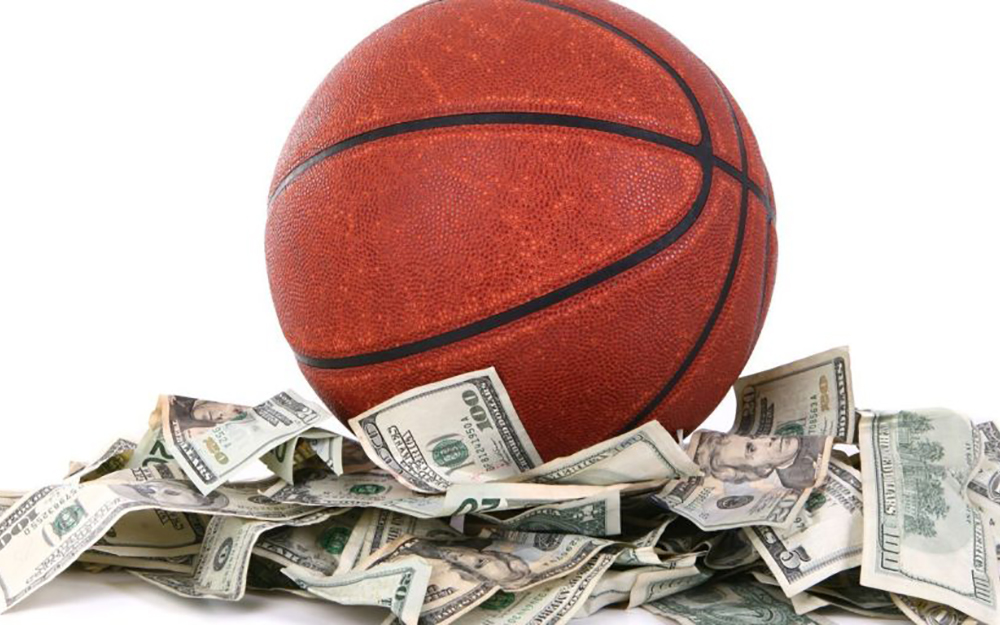
By Flint Wheeler
NBA 2K18 season is upon us and CV Weekly has you covered at the wager window. In the case of basketball, having a reliable offensive scheme that you can roll out every game regardless of the matchup gives you a leg-up. Think Mike D’Antoni’s free-flowing space-and-pace attack, or Jerry Sloan’s nearly unbeatable pick-and-roll offense from the 1980s and 90s.
When it comes to betting, you can gain the same sort of advantage by having a tightly defined set of rules that you can apply to every single game regardless of who’s on the court.
Fortunately, you don’t have to create your own betting system from scratch. There are already several established strategies that you can try on for size when you lay down wagers on your favorite teams, and there’s no rule against pilfering from the playbooks of those who came before you. We’ve included some of the most reliable systems and money-management strategies below, along with insights on how to use them. When combined with an understanding of the game, these systems can help turn even rookie betters into all-stars.
The High Totals System
Few strategies are easier to learn and apply than the High Totals System created by Allen Moody, a sports-betting professional and the author of Becoming a Winning Gambler and Sports Betting Basics. Moody discovered that sportsbooks often underestimate game totals for NBA non-conference games, and began taking the over on all games with an over/under of 220 total points. It’s a simple strategy, but it paid off handsomely as he was correct 63.5% of the time for all games meeting that criteria from 2004-05 to 2008-09.
Those kinds of games were rarities a decade ago, but they’re becoming more common now as teams push the pace and drain more three-pointers. Back in 2004-05, NBA teams scored an average of 97.2 points per game. That number jumped to 100.0 in 2008-09, and rose all the way to 105.6 in 2016-17. Sportsbooks have become savvy to this trend, but there’s still value to be found by taking the over in games with particularly high total-point projections.
The Blowout System
When an NBA team wins by 15 or more points, you might think that they’ve got momentum and will win their next game by double-digits as well. However, the opposite is usually true. The number crunchers at Paradise Wagers have found that home favorites of ten points or more who are fresh off of 15-point victories beat the spread just 42.5% of the time.
In other words, teams that hammer their opponent’s one game are unlikely to do so the following night. That statistical drop off could be the result of player fatigue or overconfidence, or a result of the oddsmakers overreacting to the previous game. Whatever the reason, there’s money to be made by betting against a team that just wiped the court with its previous opponent.
The Three in Four System
The NBA has gone out of its way to reduce the number of back-to-back games in recent years, but it isn’t atypical for games to occur in which both teams are playing their third game in four nights. The experts at Tilted Sports found that teams playing under this scenario exceed the projected point total 58.8% of the time.
The most likely explanation is that defense takes far more effort than offense, and most players play D with far less intensity when they’re tired. Whatever the case, you’d be well advised to pick the “over” when this scenario presents itself on the schedule.
The Back-to-Back System
We all know that NBA teams struggle to win the second game of back-to-backs, but they don’t all struggle at the same rate. The analytics specialists conducted a fascinating study in 2016 in which they examined the effects of back-to-backs on teams that were above and below .500 in the standings.
They found that teams with winning records lost 5% more than their average on the second night of a back-to-back, while teams with losing records lost 11% more often than usual on the second night of a back-to-back. They also found that location played a huge factor in a team’s performance. Teams playing the second game of a back-to-back on the road were 18% more likely to lose.
These are invaluable insights to consider when making your next bet. You may also want to consider a team’s average age, its pace of play, and whether the team has had to adjust to multiple time zones during its latest stretch of games. All of these factors can cause a tremendous drop off from one game to the next.
With the young season upon us, the above will give the sharps and squares plenty to chew on when thinking about your next wager. As always, the most important tools to survive this betting season are; Only bet what you can afford to lose, stay disciplined to a system and don’t waver, and most importantly – never let emotion run your brain. Have fun and G’Luck!!










































